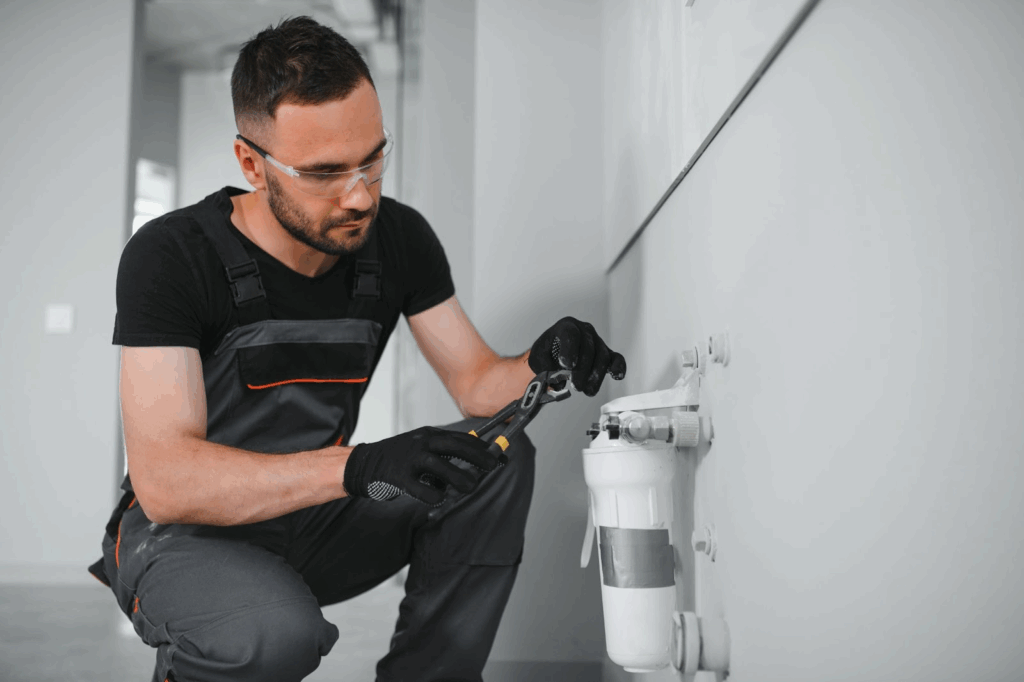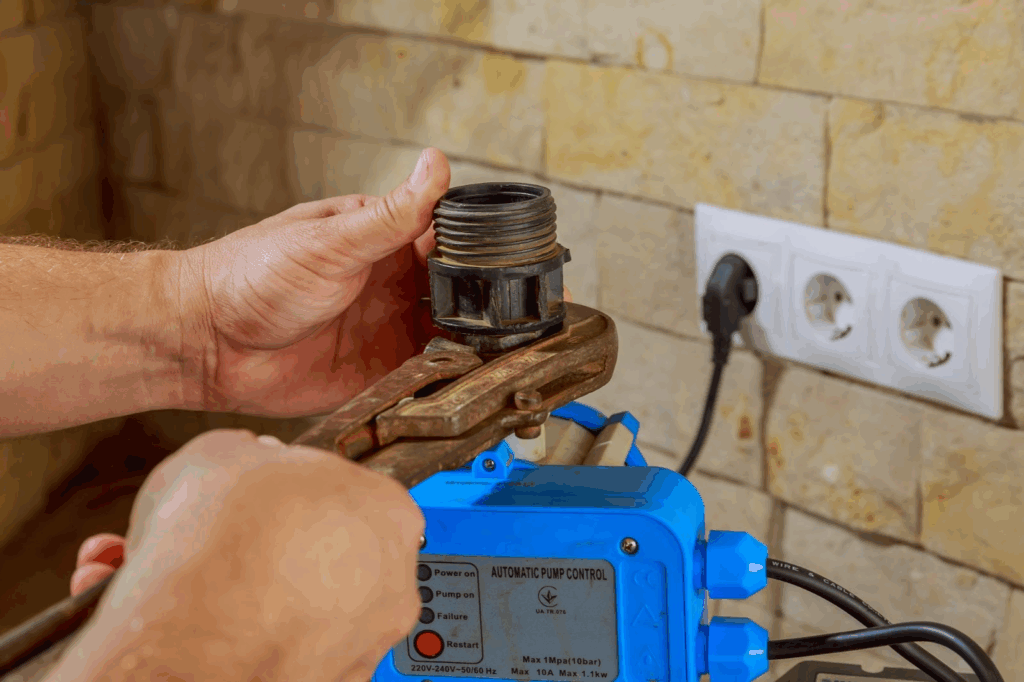A flooded basement isn’t just an inconvenience; it’s a costly disaster waiting to happen. Water damage weakens your home’s foundation, ruins belongings, and creates the perfect environment for mold. A sump pump is necessary if your basement collects water during heavy rain or snowmelt. But before installing one, understanding the costs involved is crucial. Knowing what drives the price helps you budget wisely and avoid unexpected expenses.
Factors Affecting the Cost to Install a Sump Pump
Installing a sump pump isn’t as simple as purchasing the unit. The total cost depends on several factors, including labor, materials, and the condition of your basement. Understanding these factors will help you plan and avoid unexpected expenses:
Type of Sump Pump
The type of sump pump you choose impacts the cost. Submersible pumps sit inside the sump basin and are more expensive than pedestal pumps. Pedestal pumps are more affordable but may not be as powerful for homes with frequent water issues. Battery or water-powered backup systems add extra costs but protect during power outages. Choosing the right sump pump ensures you get the best performance for your home’s needs.
Labor and Installation Fees
Hiring a professional ensures the sump pump is installed correctly and functions properly. Plumbers and contractors charge based on the complexity of the installation, with costs varying between hourly rates and flat fees. If the installation requires extensive excavation or adjustments to the drainage system, labor costs will be higher. Some homeowners attempt DIY installation to save money, but incorrect setup can lead to expensive repairs. Investing in professional installation helps avoid long-term issues.
Materials and Additional Components
Beyond the pump itself, installation requires various materials that affect the total cost. Drainage pipes, sump basins, check valves, and sealants contribute to the final price. Some homes may need electrical upgrades or new outlets to accommodate the pump. High-quality materials increase the initial cost but help prevent future maintenance problems. A well-installed system with durable components reduces the risk of failure.
Home and Basement Conditions
Every home has different structural conditions that influence the installation process. Older homes might need additional foundation work before installing a sump pump. Soil type also plays a role, as rocky or dense soil increases excavation difficulty and cost. Homes with finished basements may require extra labor to access the foundation. Evaluating these factors ahead of time helps prevent unexpected expenses during installation.
The Cost Breakdown to Install a Sump Pump
Understanding the costs involved in sump pump installation helps homeowners budget properly. Each aspect of the process, from buying the unit to setting up drainage, comes with its expenses. Breaking down these costs ensures you know where your money is going:
Cost of the Sump Pump Unit
Sump pump prices vary based on type, brand, and power capacity. Basic pedestal pumps cost less, while high-performance submersible pumps cost more. Features such as cast-iron construction and automatic sensors also affect cost. Some high-end models include innovative technology for remote monitoring. Investing in a reliable sump pump reduces the need for frequent replacements.
Excavation and Pit Installation Costs
Digging the sump pit is a necessary step that requires labor and tools. Homes with tough soil conditions or concrete foundations may have higher excavation costs. The sump basin also adds to the total price, as larger or reinforced basins cost more. Properly digging and placing the pit ensures the pump works efficiently. Cutting corners on this step can lead to drainage problems.

Plumbing and Drainage System Costs
A sump pump needs a proper drainage system to function effectively. Discharge pipes carry water away from the foundation, preventing future flooding. The length and type of piping required affect the cost, especially if additional materials are needed. High-quality pipes reduce the risk of leaks and blockages over time. Setting up an efficient drainage system ensures long-term basement protection.
Electrical Installation Costs
Some sump pumps require dedicated electrical circuits, which may involve hiring an electrician. An upgrade may be needed if your home’s electrical panel lacks space for an additional circuit. Battery backups add to the cost but ensure the pump works during power outages. Installing an alarm system can provide extra security by notifying homeowners of failures. Electrical costs vary depending on the complexity of the setup.
Other Costs to Consider When You Install a Sump Pump
Installing a sump pump involves more than purchasing and setting it up. Depending on home conditions and extra features, additional expenses can arise. Factoring in these costs helps prevent budget surprises:
Basement Waterproofing
A sump pump works best when combined with proper waterproofing. Sealants, drainage tiles, and vapor barriers enhance protection against moisture. While waterproofing adds to the cost, it prevents long-term damage and mold growth. Some homeowners choose to invest in both sump pumps and waterproofing systems simultaneously. A well-protected basement stays dry and structurally sound.
Backup Sump Pump Installation
A backup pump ensures protection during power outages or pump failures. Battery-powered and water-powered backups come at different price points. The extra cost depends on the system type and installation complexity. While not mandatory, a backup pump can prevent costly water damage. Homes in high-risk flood zones benefit most from this added security.
Permit and Inspection Fees
Certain cities and counties require permits for sump pump installation. Inspection fees may also apply to ensure compliance with local building codes. The cost of permits varies based on location and project scope. Homeowners should check with their local authorities before starting the installation. Failing to get permits can result in fines or project delays.
DIY vs. Professional Costs to Install a Sump Pump
Homeowners deciding between DIY and professional installation should weigh the costs and risks. While DIY installation can save money, mistakes can lead to expensive repairs. Professional installation ensures long-term reliability but comes at a higher upfront price. Choosing the right approach depends on skill level, budget, and home requirements.
DIY Installation Costs
A DIY sump pump installation eliminates labor costs, making it cheaper. Homeowners must purchase the pump, piping, and necessary tools themselves. However, installing it requires knowledge of excavation, plumbing, and electrical work. Mistakes can cause leaks, water backup, or pump failure. Those with experience may complete the job, but hiring a professional reduces the risk of costly errors.

Professional Installation Costs
Hiring a plumber or contractor guarantees proper installation but increases the total cost. Professionals charge for labor, materials, and sometimes additional services such as waterproofing. While the upfront expense is more expensive, professional work reduces the risk of flooding or system failure. Many companies offer warranties on their work, providing extra peace of mind. A professional installation ensures the sump pump operates efficiently for years to come.
Maintenance Costs After You Install a Sump Pump
Installing a sump pump is only part of the investment—keeping it in good condition requires ongoing maintenance. Regular upkeep ensures the system functions appropriately and prevents unexpected failures. Ignoring maintenance can lead to costly repairs or even total pump replacement. Factoring in these long-term costs helps homeowners avoid sudden expenses and extend the life of their sump pump:
Routine Maintenance and Servicing Costs
Like any mechanical system, a sump pump needs routine maintenance to stay efficient. Homeowners should inspect their pump at least twice a year, especially before heavy rain seasons. Hiring a professional for an inspection and cleaning typically costs between $100 and $300 per visit. DIY maintenance, such as clearing debris from the basin and testing the pump, helps reduce expenses. A well-maintained sump pump lasts longer and requires fewer repairs over time.
Battery Backup and Replacement Costs
If your sump pump has a battery backup, the battery will need periodic replacement. Most backup batteries last between three to five years, depending on usage. Depending on the model and power capacity, replacing a battery costs between $150 and $500. Some advanced backup systems include alarms and Wi-Fi connectivity, which may cost additional. Keeping the battery in good condition ensures the pump functions during power outages.
Repairs and Part Replacement Costs
Some sump pump components may wear out over time and need replacement. The check valve prevents water from flowing back into the pit, can fail, and costs around $15 to $50 to replace. Float switches, responsible for activating the pump, may cost $50 to $150 if they need replacement. Motor failures or major repairs can cost between $200 and $600, depending on the issue. Promptly addressing minor repairs helps prevent complete system failure.
Sump Pump Replacement Costs
Even with proper maintenance, sump pumps eventually wear out and need replacement. The average lifespan of a sump pump is seven to ten years, depending on usage and quality. Replacing an old pump with a new unit, including labor, costs between $500 and $1,500. Upgrading to a more durable or high-capacity model may increase the price. Planning for a replacement prevents the risk of a failing pump during heavy rainfall.
How to Save Money When You Install a Sump Pump
Reducing installation costs without compromising quality is possible. Homeowners can take a few strategic steps to minimize expenses. Thoughtful planning and research help save money in the long run.
Choose the Right Pump for Your Needs
Buying the most expensive pump isn’t always necessary. Selecting a unit that matches your home’s water risk prevents overspending. Energy-efficient models cost more upfront but save on electricity bills. Checking product warranties ensures long-term value. Wise investment helps avoid frequent replacements.
Bundle Installation With Other Home Projects
Combining sump pump installation with other basement projects reduces labor costs. Contractors often offer discounts when completing multiple tasks at once. Waterproofing, foundation repairs, or drainage system upgrades can be done simultaneously. Planning prevents repeated disruptions to your home. Grouping projects makes installation more cost-effective.
Get Multiple Quotes From Contractors
Comparing contractor estimates helps homeowners find the best deal. Prices vary widely, so getting multiple quotes ensures a fair rate. Checking online reviews and references ensures quality work. Some companies offer seasonal discounts or promotions. Negotiating with contractors may lead to lower costs.
Install a Sump Pump to Prevent Water Damage
Water damage doesn’t wait for the right time—it happens when you least expect it. A sump pump isn’t just another household upgrade; it’s your first defense against costly repairs and structural damage. Every heavy rainstorm, snowmelt, and unexpected flood reminds you of your home’s vulnerability. Waiting until disaster strikes could mean thousands of dollars in damage, stress, and lost valuables. Taking action now by installing a sump pump ensures peace of mind, a dry basement, and a strong home for years.
Explore Castaneda’s Plumbing and Rooter blog for expert sump pump insights and plumbing solutions.

